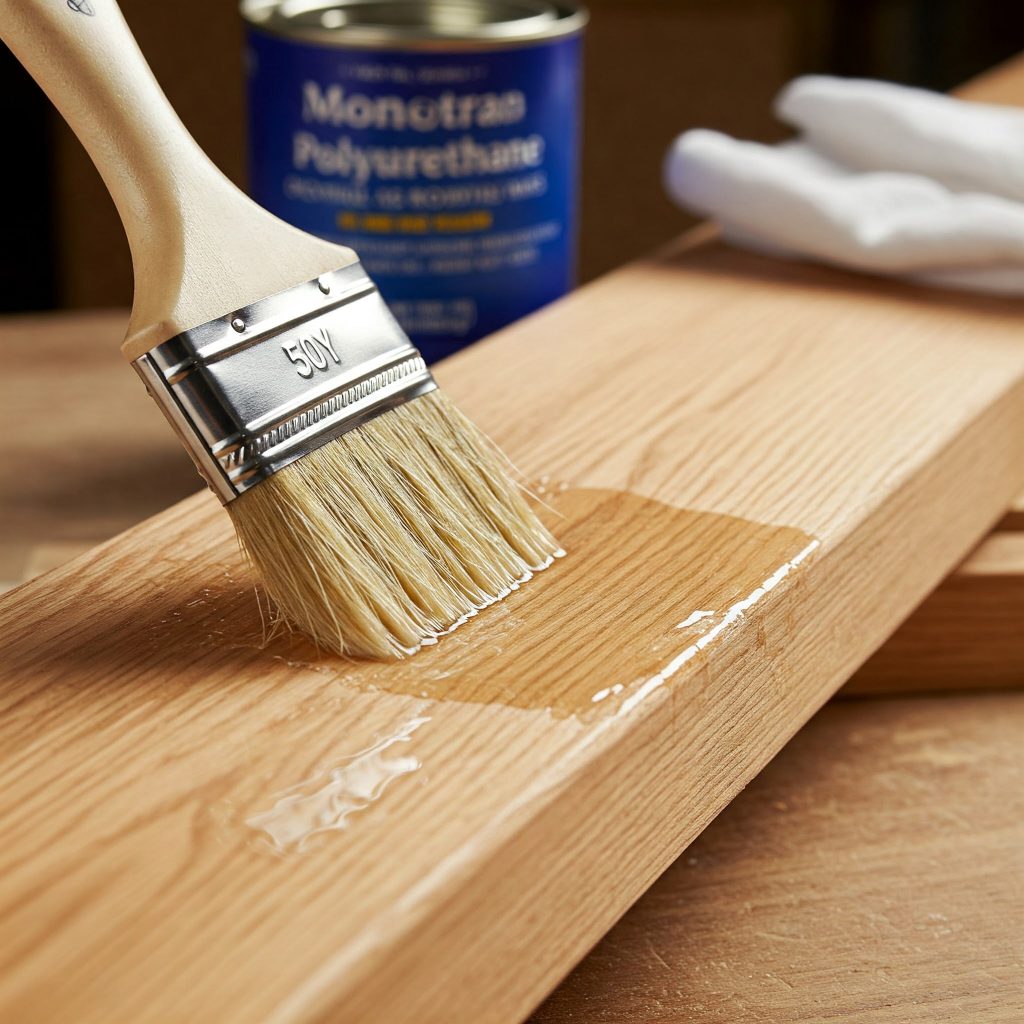
When it comes to protecting and enhancing the beauty of wood, polyurethane is one of the most popular finishes available. It provides a durable, protective layer that can withstand wear and tear while highlighting the natural grain and color of the wood. However, not all polyurethane finishes are the same. Depending on your project, you’ll need to choose between oil-based, water-based, and other types of polyurethane finishes. In this blog post, we’ll break down the different types of polyurethane finishes, their pros and cons, and how to choose the right one for your woodworking project.
What is Polyurethane?
Polyurethane is a synthetic finish that forms a hard, protective coating on wood surfaces. It’s available in various formulations, including oil-based, water-based, and hybrid options. Polyurethane is commonly used on furniture, floors, cabinets, and other wood projects to provide durability, moisture resistance, and a beautiful finish.
Types of Polyurethane Finishes
1. Oil-Based Polyurethane
What It Is: Oil-based polyurethane is a traditional finish that combines polyurethane resins with an oil base (usually linseed or tung oil). It’s known for its durability and rich, warm finish.
Pros:
- Provides a warm, amber tone that enhances the natural color of wood.
- Extremely durable and resistant to scratches, heat, and chemicals.
- Easy to apply and self-levels well, reducing brush marks.
- Ideal for high-traffic areas like floors and tabletops.
Cons:
- Longer drying time (up to 24 hours between coats).
- Strong odor and requires proper ventilation during application.
- Contains volatile organic compounds (VOCs), which can be harmful to the environment and health.
- Can yellow over time, especially on lighter woods.
Best For: Furniture, hardwood floors, and projects where durability and a warm finish are priorities.
2. Water-Based Polyurethane
What It Is: Water-based polyurethane is a modern alternative to oil-based finishes. It uses water as a carrier instead of oil, resulting in a clear, non-yellowing finish.
Pros:
- Dries quickly (2–4 hours between coats).
- Low odor and fewer VOCs, making it safer and more environmentally friendly.
- Clear finish that doesn’t alter the natural color of the wood.
- Resistant to yellowing over time, making it ideal for light-colored woods.
Cons:
- Less durable than oil-based polyurethane, requiring more frequent maintenance.
- Can raise the grain of the wood, requiring additional sanding.
- More expensive than oil-based options.
Best For: Light-colored woods, indoor furniture, and projects where a clear, non-yellowing finish is desired.
3. Wipe-On Polyurethane
What It Is: Wipe-on polyurethane is a thinner version of oil-based or water-based polyurethane, designed for easy application with a cloth or sponge.
Pros:
- Easy to apply, even for beginners.
- Provides a smooth, even finish with minimal brush marks.
- Great for small projects or hard-to-reach areas.
Cons:
- Requires more coats to achieve the same level of protection as regular polyurethane.
- Less durable than standard polyurethane finishes.
Best For: Small projects, intricate details, and touch-ups.
4. Satin, Semi-Gloss, and Gloss Finishes
Polyurethane finishes are available in different sheens, which affect the final appearance of the wood:
- Satin: A low-sheen finish that provides a natural, matte look. It’s great for hiding scratches and imperfections.
- Semi-Gloss: A medium-sheen finish that offers a balance between shine and durability.
- Gloss: A high-sheen finish that creates a shiny, reflective surface. It’s the most durable but also shows scratches and imperfections more easily.
Best For: Choose the sheen based on your aesthetic preferences and the level of durability needed. Satin is popular for floors, while gloss is often used for decorative pieces.
5. Hybrid Polyurethane
What It Is: Hybrid polyurethane combines the best qualities of oil-based and water-based finishes. It’s typically water-based with added oils for enhanced durability and a warmer finish.
Pros:
- Dries faster than oil-based polyurethane but slower than water-based.
- Provides a warmer finish than water-based polyurethane.
- More durable than standard water-based finishes.
Cons:
- May still have a slight odor and contain some VOCs.
- More expensive than traditional options.
Best For: Projects that require a balance between durability, ease of application, and a warm finish.
How to Choose the Right Polyurethane Finish
When selecting a polyurethane finish, consider the following factors:
- Project Type: For high-traffic areas like floors, choose a durable oil-based or hybrid polyurethane. For furniture or decorative pieces, water-based or wipe-on polyurethane may suffice.
- Appearance: Decide whether you want a warm, amber tone (oil-based) or a clear, natural look (water-based).
- Drying Time: If you need a quick turnaround, water-based polyurethane is the best choice.
- Odor and VOCs: For indoor projects or environmentally conscious choices, opt for water-based or low-VOC options.
- Ease of Application: Beginners may prefer wipe-on polyurethane for its simplicity.
Application Tips for Polyurethane Finishes
- Prepare the Surface: Sand the wood thoroughly and remove all dust before applying polyurethane.
- Use the Right Tools: For oil-based polyurethane, use a natural bristle brush. For water-based, a synthetic brush or foam applicator works best.
- Apply Thin Coats: Multiple thin coats are better than one thick coat. Sand lightly between coats for a smooth finish.
- Ventilate the Area: Ensure proper ventilation, especially when using oil-based polyurethane.
- Follow the Manufacturer’s Instructions: Drying times and application methods can vary, so always read the label.
Final Thoughts
Polyurethane finishes are a versatile and durable way to protect and enhance the beauty of wood. Whether you choose oil-based, water-based, or a hybrid option, each type of polyurethane has its own unique benefits and best uses. By understanding the differences and considering your project’s needs, you can select the perfect finish to achieve a professional, long-lasting result.

Leave a Reply